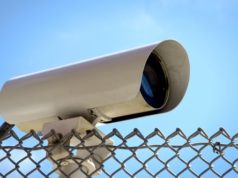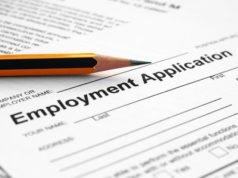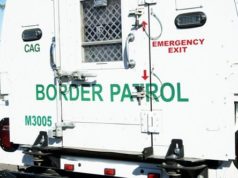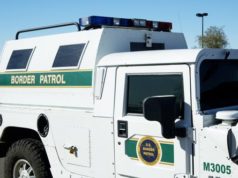
Introduction
A job description is a statement of the duties, responsibilities, and requirements of a particular job. It is an essential document that helps to establish expectations and ensures that employees understand what is expected of them. Job descriptions facilitate the hiring process by providing potential candidates with a clear understanding of the expectations of the role. Moreover, they form the basis of performance appraisal and provide a clear framework for career development. This article provides an in-depth analysis of job descriptions and how they can be written effectively.
Why are Job Descriptions Important?
Job descriptions serve several purposes in an organization. Foremost, they help to establish clear expectations for employees, which in turn helps to improve their performance and productivity. They provide a clear understanding of the role and responsibilities of the employee, making it easier for them to prioritize tasks and manage their workload. Additionally, job descriptions provide a framework for career development and help employees to understand how their role contributes to the overall success of the organization.
Job descriptions also play a crucial role in the recruitment and selection process. They provide a clear understanding of the qualifications, skills, and experience required for the position, which helps to ensure that the right candidates are selected for the role. Job descriptions can also be used to develop effective interview questions and to assess candidate suitability.
Writing Effective Job Descriptions
Writing an effective job description requires attention to detail and a thorough understanding of the role and organizational needs. The following are some key steps that can be used to write effective job descriptions:
1. Conduct a job analysis
Before writing a job description, it is essential to understand the role and responsibilities of the position. This can be achieved by conducting a job analysis, which involves reviewing the tasks, duties, and responsibilities associated with the role. The job analysis helps to identify the critical success factors and the skills and qualifications required for the position.
2. Identify the key responsibilities
Once the job analysis has been conducted, it is essential to identify the critical responsibilities associated with the role. These should be listed in order of importance, and the level of responsibility should be clearly defined.
3. Define the qualifications and skills required
The job description should clearly identify the qualifications and skills required for the position. This includes educational qualifications, technical skills, and soft skills such as communication, leadership, and problem-solving.
4. Use clear and concise language
A job description should be written in clear and concise language, avoiding jargon or technical terms that may not be understood by potential candidates. The language used should be straightforward and easy to understand.
5. Include information on compensation and benefits
Effective job descriptions should also include information on compensation and benefits. This helps to manage expectations and ensures that potential candidates understand the total compensation package associated with the position.
Government Resources
The US Department of Labor provides comprehensive resources on job descriptions, including guidelines for writing effective job descriptions and templates that employers can use to create their own. The department also provides information on the Fair Labor Standards Act (FLSA), which sets standards for minimum wage and overtime pay. Employers must comply with these standards and ensure that job descriptions accurately reflect the requirements set out in the FLSA.
The US Equal Employment Opportunity Commission (EEOC) provides guidelines on non-discriminatory job descriptions. This includes ensuring that language used in job descriptions is gender-neutral and that the requirements are not discriminatory towards any protected groups under the Civil Rights Act of 1964.
Subheadings
The following subheadings provide a detailed analysis of various aspects of effective job descriptions:
1. Job Title
The job title is a critical element of the job description, as it provides the first impression for potential candidates. It should accurately reflect the role and responsibilities of the position. The job title should be clear and concise, and it should accurately convey the position’s level of responsibility and authority.
2. Job Summary
The job summary provides an overview of the role and responsibilities of the position. It should be a concise statement that provides an overall picture of the job and its importance to the organization. It should answer the question, What is the position all about?
3. Duties and Responsibilities
The duties and responsibilities section of the job description provides a comprehensive list of the tasks and expectations associated with the position. It should be organized in order of importance and provide clear direction to the candidate. Each responsibility should be clearly defined, and the level of responsibility should be indicated.
4. Qualifications and Skills
The qualifications and skills section of the job description provides an overview of the educational and technical requirements of the position. It should include any relevant degrees, licenses, or certifications required for the position. Additionally, it should list the technical skills required, such as experience with specific tools or software programs. The section should also include soft skills such as communication, leadership, and problem-solving.
5. Compensation and Benefits
The compensation and benefits section of the job description provides information on the salary range for the position, as well as any additional benefits associated with the position. This may include health insurance, retirement plans, and vacation time. It is important to ensure that this section is accurate and clearly defined to manage candidate expectations.
Conclusion
Job descriptions play a crucial role in the success of an organization. Effective job descriptions help to establish clear expectations for employees, facilitate the hiring process, and provide a framework for career development. They should be written in clear and concise language and include information on job responsibilities, qualifications and skills, and compensation and benefits. Employers should ensure that job descriptions comply with relevant laws and regulations and are non-discriminatory. Government resources such as those provided by the US Department of Labor and the EEOC can help employers to write effective job descriptions that comply with relevant laws and regulations.
To be a border patrol agent, one of the most important immigration jobs one may obtain, one’s career must center on the stifling of illegal entry onto American soil, as well as the prevention of potential terrorist acts. A border patrol agent has many different job duties that may vary depending on the current issues and location of the agent. Immigration jobs, such as border patrol agents, are a vital part of the country’s immigration system.
One of the jobs of the United States Border Patrol involves working with other law enforcement agencies to try to stop the flow of illegal immigrants over the Mexican and Canadian borders. Border patrol agents are also stationed surrounding Florida in hopes of preventing Cuban Haitian crime.
The job of the border patrol agent is not a typical 40-hour-a-week job. Most border patrol agents work roughly 60 hours per week. No matter what the time of day, there are Border Patrols agents on duty. There are certain job duties that a Border Patrol agent does on a regular basis.
These are the tasks that are delegated through a team of border patrols. These possible tasks are called line watch. Line watch can refer to several different duties such as traffic checking, patrol, detecting drugs and other contraband, traffic watching and apprehending illegal immigrants. Line watch also refers to the job of watching air traffic.
Border Patrol agents live where they work. After boot-camp, they are stationed in any number of locations. Most of these locations are along the border of Mexico; particularly in Texas, Arizona and southern California. Although a border patrol agent cannot guarantee that they will be stationed in the location they desire, a border patrol agent has the option to make a preference list of the eight sectors along the Northern border. Ultimately, the border patrol agent will be stationed where needed, although preference will try to be taken into account.
Since the attacks that occurred on September 11th, it is the job of many border patrols to investigate possible terrorist plots and apprehend the perpetrators, if necessary.





























